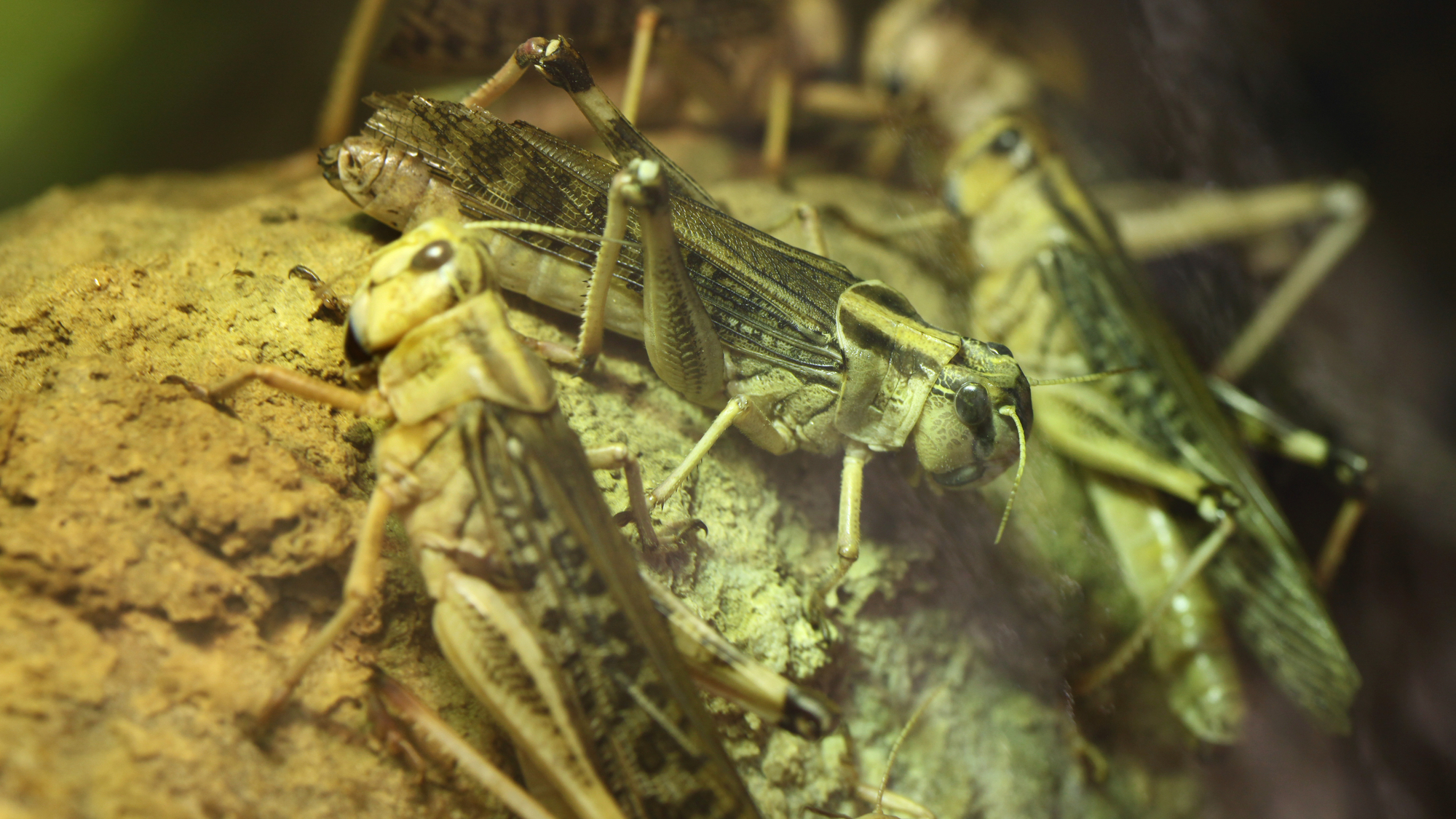

It’s tough to top locusts’ destructive capabilities—there’s a reason they’re one of the biblical plagues, after all. The insect’s notorious ability to hone in on food sources like agricultural fields is largely owed to impressive olfactory senses powered by its antennae. Although researchers previously integrated this biological tool into robotics to potentially develop a new generation of bomb sniffing and search-and-rescue aids, a team at Washington University in St. Louis, MO, is experimenting with harnessing the bugs themselves… after augmenting them into cyborgs.
Engineers can already utilize locusts’ sense of smell by recording signals of electrodes attached to their brains, but the results are often inaccurate and unreliable. To solve this issue, scientists led by mechanical engineering and materials science professor Srikanth Singamaneni instead injected infrared-sensitive nanoparticles into the brains of locusts.
[Related: This robot gets its super smelling power from locust antennae.]
“[A]pproaches to read-out information from biological systems, especially neural signals, tend to be suboptimal due to the number of electrodes that can be used and where these can be placed,” Singamaneni and colleagues wrote in their new paper published in the journal, Nature Nanomaterials. “By harnessing the photothermal properties of nanostructures… we show that the odor-evoked response from the interrogated regions of the insect olfactory system can not only be enhanced but can also improve odor identification.”
These tiny additives, made of a silicon shell-encased protein core, were first imbued with octopamine—a neurotransmitter associated with an insect’s “fight or flight” instinct. When exposed to infrared laser light, the nanoparticles then emitted chemicals to boost brain activity tied to a locust’s olfactory senses. This then made it easier for scientists to locate that specific neural activity, and use the (previously unreliable) electrodes to identify chemicals in a common lab test set.
[Related: This surgical smart knife can detect endometrial cancer cells in seconds.]
At the moment, these early demonstrations are more proof-of-concept than anything else. Speaking with New Scientist on Thursday, Singamaneni explains that the system currently only works in closed laboratory settings, and not in real time situations. Still, Singamaneni’s team hopes further research and experimentation may one day develop a method for creating small swarms of cyborg-enhanced locusts capable of detecting medical issues in humans, locating explosives, or honing in on environmental contaminants.
